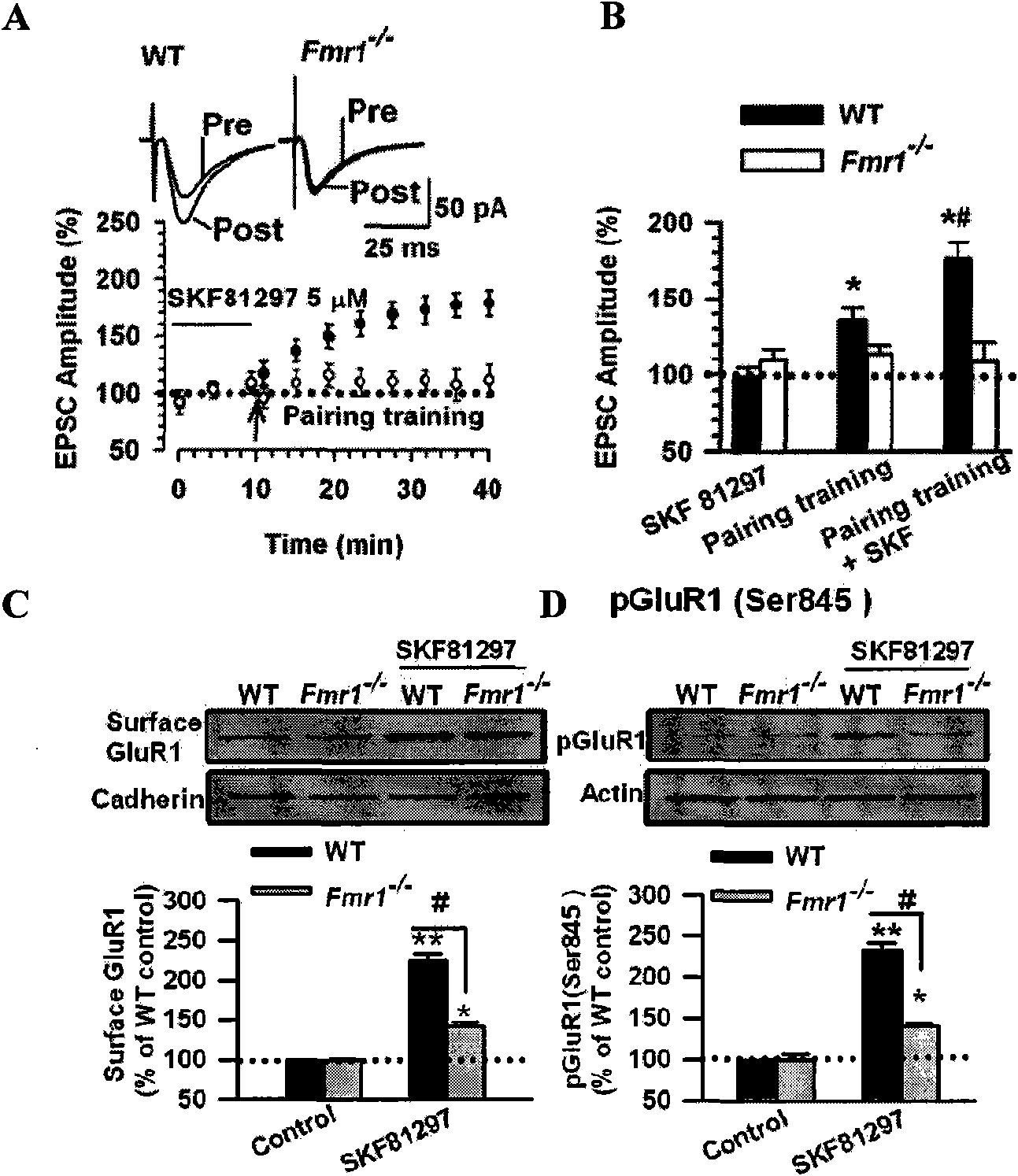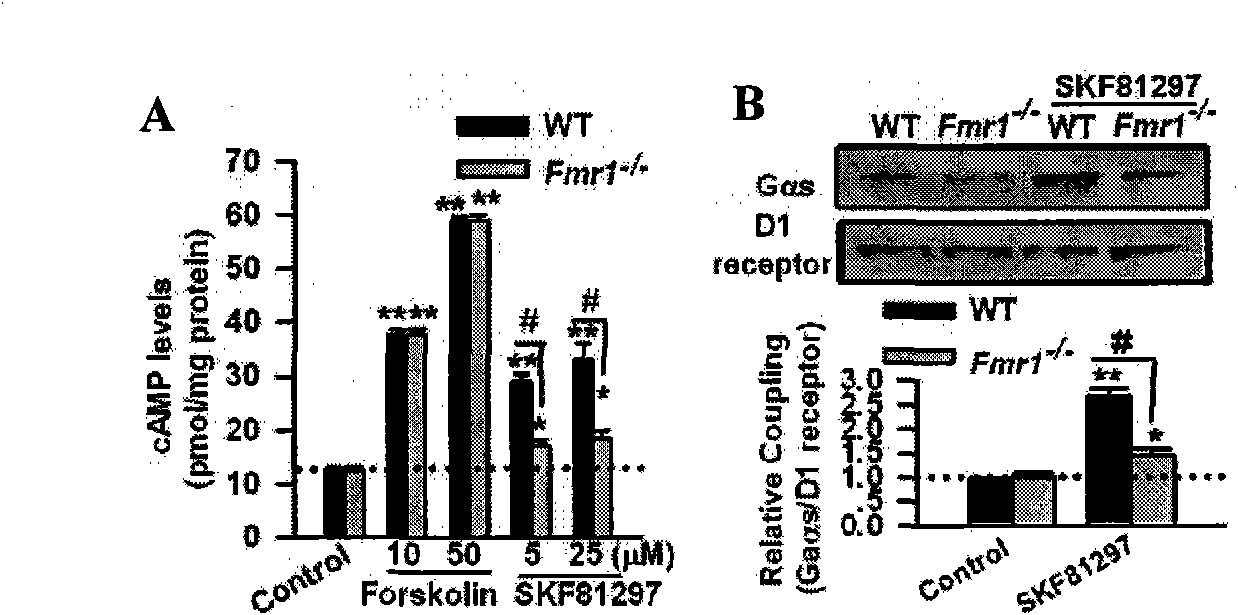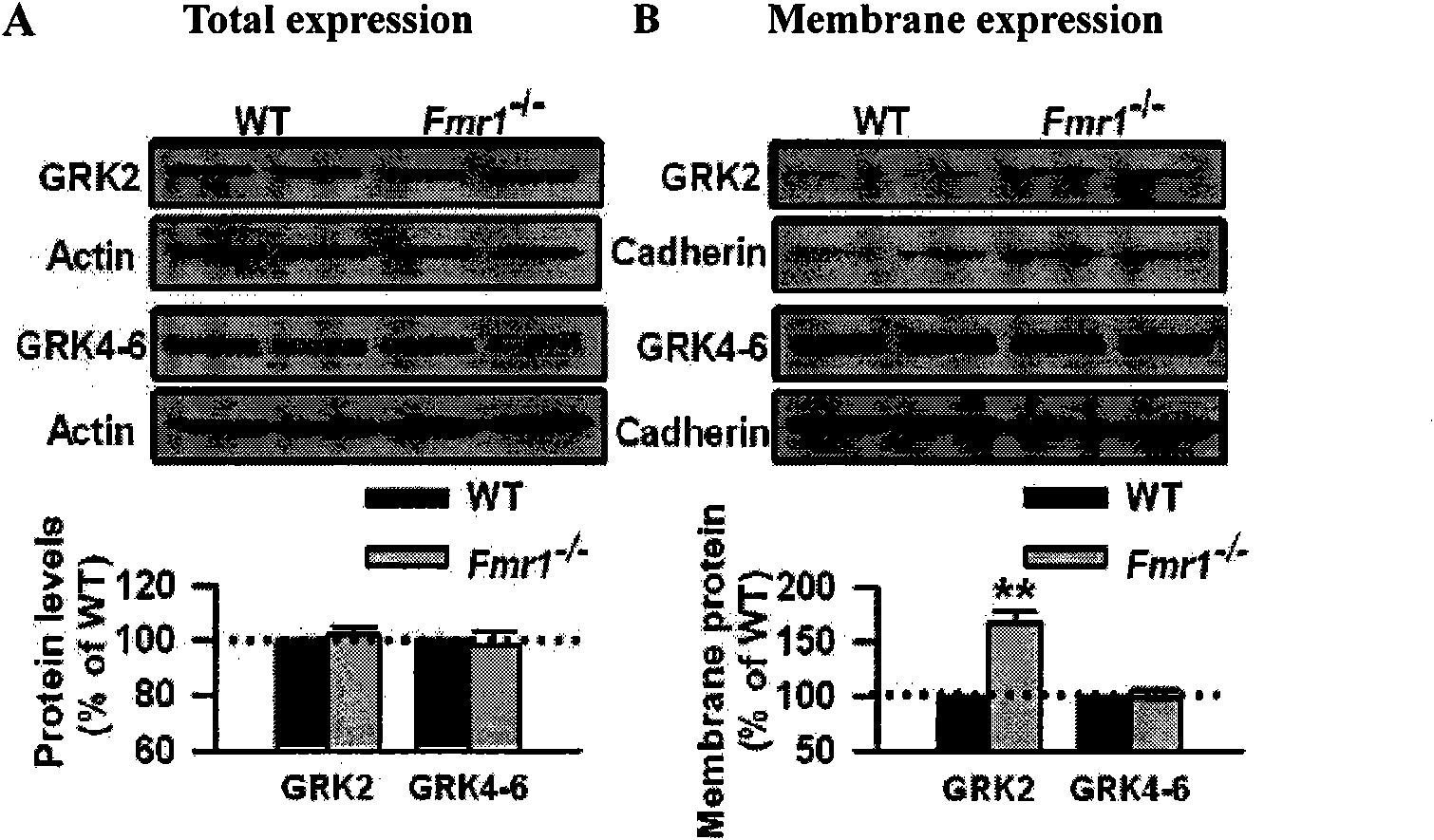Medicine target point for treating friable X syndrome and application thereof in pharmacy
A syndrome and drug technology, applied to the drug targets for the treatment of Fragile X syndrome and its application in the field of pharmaceuticals, can solve the problems of infancy and no effective drugs, and achieve the effect of improving behavioral performance
- Summary
- Abstract
- Description
- Claims
- Application Information
AI Technical Summary
Problems solved by technology
Method used
Image
Examples
Embodiment 1
[0017] Example 1: Research on new drug targets using D1 receptor and GRK2
[0018] Materials and Methods
[0019] 1. Experimental animals
[0020] Adult (6-8 weeks) FMR1 knockout mice and wild-type normal control mice (FVB.129P2-Fmr1tm1Cgr strain) were purchased from Jackson Laboratories, USA. Raise in constant temperature, constant humidity, 12-hour lighting, free drinking animal room, feed pellet feed. All experimental procedures were in accordance with the regulations of the Animal Use and Management Committee of Fourth Military Medical University.
[0021] 2. Whole-cell Patch Clamp Recordings in Thin Sections of Adult Brain
[0022] Mice were anesthetized with 1-2% isoflurane, 300 μm ACC brain slices were cut transversely with a vibrating microtome, and placed in a mixed gas (95% O 2 and 5% CO 2 ) saturated artificial cerebrospinal fluid (ACSF), the experiment was performed after recovery for 1 h. ACSF composition (in mM): NaCl 124; NaHCO 3 25; KCl 2.5; KH 2 PO 4...
Embodiment 2
[0044] Example 2: Research on D1 receptor as a new drug target
[0045] The research method is the same as in Example 1. D1 receptor agonist SKF81297 was injected intraperitoneally for behavioral studies in mice.
[0046] Results: Intraperitoneal injection of D1 receptor agonist SKF81297 (1mg / kg) in mice can significantly inhibit the hyperactivity symptoms of FMR1 knockout mice. Significantly affected.
[0047] Conclusion: Behavioral studies have found that the use of D1 receptor agonists can improve the clinical manifestations of fragile X syndrome.
Embodiment 3
[0048] Example 3: Research on GRK2 as a new drug target
[0049] The research method is the same as in Example 1. Mouse behavior studies choose GRK2 inhibitor heparin intraperitoneal injection.
[0050] Results: Intraperitoneal injection of the GRK2 inhibitor heparin (1mg / kg) in mice can significantly inhibit the hyperactivity symptoms of FMR1 knockout mice. It can be seen that the total movement distance of the mice is significantly reduced at different times, but has no significant effect on the movement of normal mice .
[0051] Conclusion: Behavioral studies have found that blocking abnormal GRK2 activity in nerve cells can improve the clinical manifestations of Fragile X syndrome.
PUM
 Login to View More
Login to View More Abstract
Description
Claims
Application Information
 Login to View More
Login to View More - R&D
- Intellectual Property
- Life Sciences
- Materials
- Tech Scout
- Unparalleled Data Quality
- Higher Quality Content
- 60% Fewer Hallucinations
Browse by: Latest US Patents, China's latest patents, Technical Efficacy Thesaurus, Application Domain, Technology Topic, Popular Technical Reports.
© 2025 PatSnap. All rights reserved.Legal|Privacy policy|Modern Slavery Act Transparency Statement|Sitemap|About US| Contact US: help@patsnap.com



